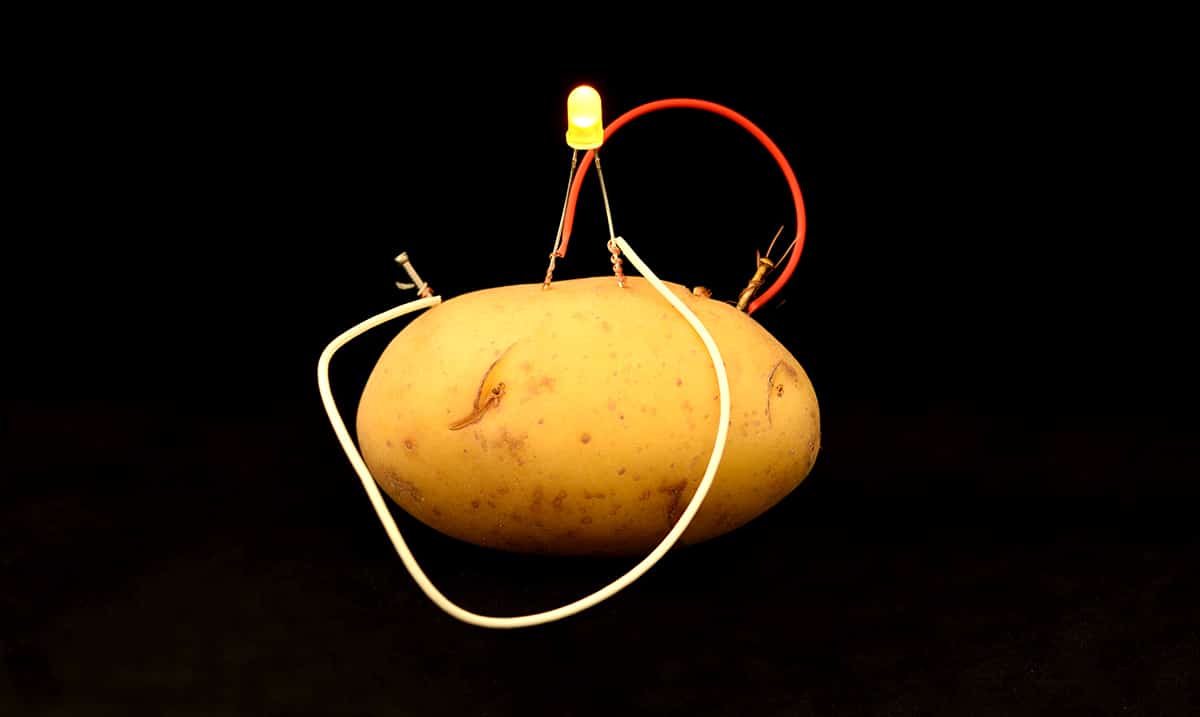If you’re ever in serious need of light perhaps using a boiled potato might be a good option. While this might sound a bit odd, it might be information that could help you at some point in the future.
According to Smithsonian Magazine, a potato battery can light up a room for over a month. This is especially neat because most people always have potatoes in their homes, don’t they? Smithsonian Magazine noted that research from before 2013 that was carried out at the Hebrew University of Jerusalem found that a potato that has been boiled for eight minutes ‘can make a battery that produces ten times the power of a raw one.’
The BBC wrote as follows on this topic around the same time period:
For the past few years, researcher Rabinowitch and colleagues have been pushing the idea of “potato power” to deliver energy to people cut off from electricity grids. Hook up a spud to a couple of cheap metal plates, wires and LED bulbs, they argue, and it could provide lighting to remote towns and villages around the world.
They’ve also discovered a simple but ingenious trick to make potatoes particularly good at producing energy. “A single potato can power enough LED lamps for a room for 40 days,” claims Rabinowitch, who is based at the Hebrew University of Jerusalem.
The idea may seem absurd, yet it is rooted in sound science. Still, Rabinowitch and his team have discovered that actually launching potato power in the real world is much more complex than it first appears.
While Rabinowitch and team have found a way to make potatoes produce more power than usual, the basic principles are taught in high school science classes, to demonstrate how batteries work.
To make a battery from organic material, all you need is two metals – an anode, which is the negative electrode, such as zinc, and a cathode, the positively charged electrode, such as copper. The acid inside the potato forms a chemical reaction with the zinc and copper, and when the electrons flow from one material to another, energy is released.
This was discovered by Luigi Galvani in 1780 when he connected two metals to the legs of a frog, causing its muscles to twitch. But you can put many materials between these two electrodes to get the same effect. Alexander Volta, around the time of Galvani, used saltwater-soaked paper. Others have made “earth batteries” using two metal plates and a pile of dirt, or a bucket of water.
While you may never need to use this trick, it isn’t something we should be overlooking. You never know what might happen in the future. Chances are in school you made some kind of potato battery but perhaps next time around boiling it would be a better option.

